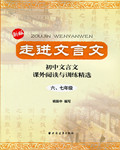题目内容
Those ________ made no mistakes in today’s exercises please raise your hands.
A.which
B.whom
C.that
D.who

 走进文言文系列答案
走进文言文系列答案An earthquake is one of the most common natural disasters. It may cause great damage. So it is wise to learn some simple safety tips to protect yourself or your family members.
Fragile items, like those made of glass are easily broken and should usually be placed on a lower surface, near the ground instead of placing them on cupboards higher up. Never place them near your bed, sofas and other furniture where you would be sitting or lying down. When there is a strong movement, these pieces will fall on the floor directly and not on you.
There is a strong chance of short circuits (短路) and fire breakouts during an earthquake. Make sure you turn off electrical connections and gas immediately when an earthquake happens.
During an earthquake, lie beneath an object that is not easily damaged. Do not go near objects that could directly fall on you. Never use the elevator to go down. Stay inside until the shaking stops and it is safe to go outside. Research has shown that most injuries happen when people inside buildings try to go out. Use the staircases at all times.
If you are outdoors, do not take shelter under a tree, streetlights, electric poles or tall buildings. If you are driving, stop your car and stay in a safe place. Do not park your car under a tree or any tall object.
If trapped in debris (瓦砾堆), cover your mouth with a handkerchief or clothing. Tap on a pipe or wall so rescuers can find you. Use a whistle (哨子) if one is available. Never shout for help. Shouting can cause you to breathe in dangerous amounts of dust. Do not light a match because you may burn yourself. Do not move about or kick up dust.
1.The purpose of the passage is to tell readers _____.
|
A.the damage caused by earthquakes |
|
B.the rescue work after earthquakes |
|
C.what to do about earthquakes |
|
D.how to prevent earthquakes |
2. The underlined word “Fragile” in Paragraph 2 probably means _____.
|
A.easily broken |
B.easily found |
C.expensive |
D.heavy |
3.To reduce the injury from the earthquake, items made of glass should be put _____.
|
A.on cupboards |
|
B.in the bedroom |
|
C.on a lower surface |
|
D.where children can’t reach them |
4.During the earthquake, people are advised to _____.
|
A.go out the building at once |
|
B.turn off electricity and gas immediately |
|
C.take shelter under a tree |
|
D.drive to a safe place quickly |
5.What should people NOT do when they are trapped in debris?
|
A.Cover their mouth with a handkerchief. |
|
B.Tap on a pipe or wall for help. |
|
C.Use a whistle for help. |
|
D.Light a match for help. |